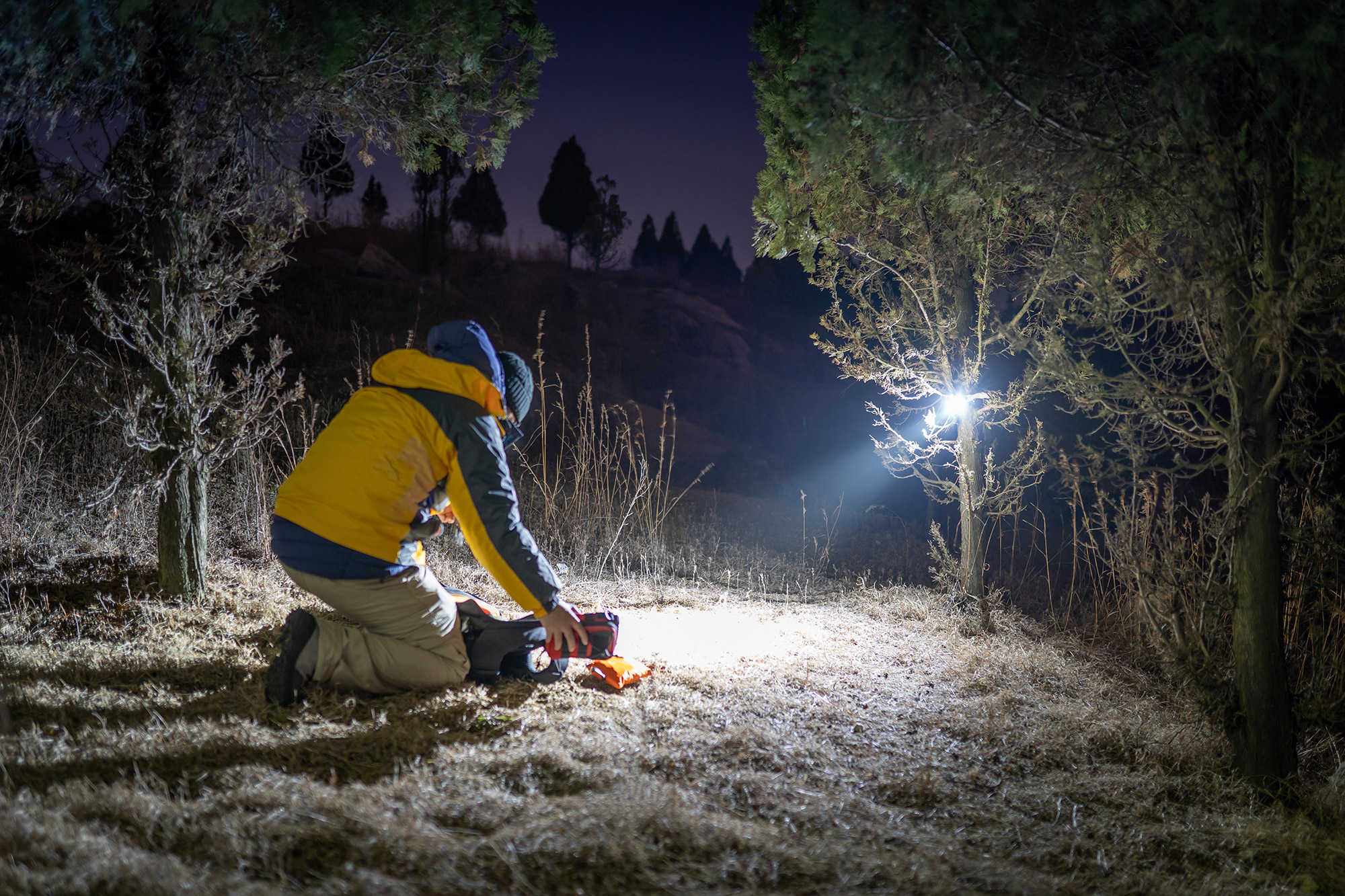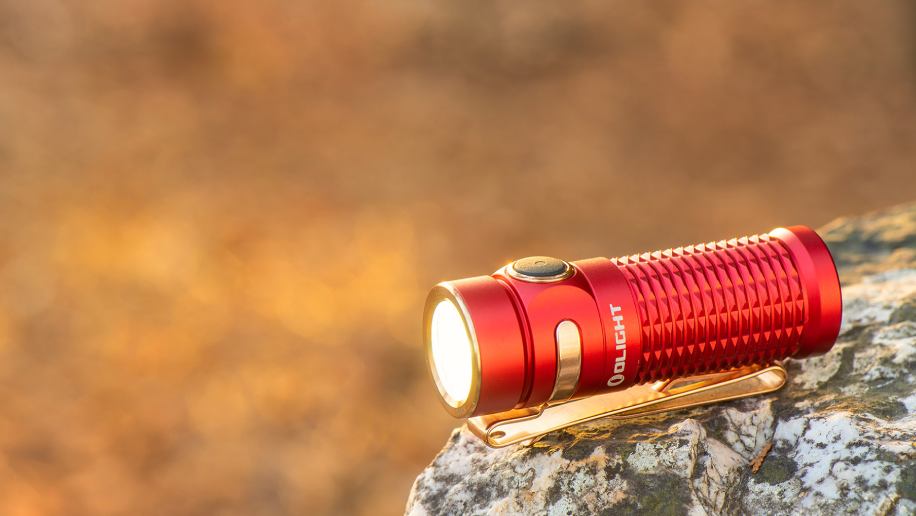Do you know how a flashlight works? I'm afraid most of you don't. Before I explain to you how a flashlight functions, first let me tell you how a flashlight got its name.
Before the invention of flashlights, people used sticks, wrapped with cloth at the top that could be lit to use as a light source. These lighting tools were called torchlights.
The word "Flashlight" was first recorded in the late 18th century when Conrad Huber invented his lighting device. The reason Conrad called it a flashlight was because the device could only produce flashes of light at certain intervals.
The zinc-carbon batteries used in the flashlight cannot offer constant current for long intervals and need to be turned off often, hence the name.
Let’s delve deep into flashlight anatomy. In this blog post, you’ll learn the basic components of a flashlight and how it works. On top of that, I’ll also shed some light on why Olight flashlights could be your ultimate lighting choice.
Basic Components of a Flashlight
There are 5 basic components that make a flashlight produce light.
1. Bulb
Back in the old days, incandescent bulbs were the most popular option. Today, there are all types of bulbs on the market, such as Light-Emitting Diode (LED), High-Intensity Discharge (HID), Compact Fluorescent (CFL), and Halogen.
Among all the bulbs, LEDs are getting the upper hand and becoming widely popular in flashlights and other lighting accessories. From having a longer life span to producing powerful light output, LEDs are superior in many ways.
How do LED bulbs work?
Unlike incandescent bulbs that use tungsten filament to produce light, LEDs use a process called electroluminescence. This process involves an electric current running through a semiconductor material.
When the current passes through the material, electrons move along the energy bandgap and recombine at electron holes. This recombination produces energy in the form of photons (light).
2. Batteries
Batteries are as important as the bulb. Without a battery, the flashlight won't work.
How does a battery work in a flashlight?
It’s quite simple. Inside the batteries are two types of electrodes a) anode (negative) and b) cathode (positive). When you connect the two electrodes to the circuit a chemical reaction takes place. The electrons are released at the anode and flow through the external circuit, powering the flashlight.
3. Reflector
Reflectors control the direction and shape of the light beams produced by flashlights. Without a reflector, the light will go haywire.
Placing a reflector strategically around the bulb helps capture and redirect the light in a desired direction, which is usually toward the front of the flashlight.
Flashlight manufacturers employ different reflector designs to achieve specific lighting characteristics and optimize performance.
4. Switch
The switch in a flashlight can be a normal switch, a ring rotator, or a slider. No matter the design of a switch, its primary function is to act as a middleman between the power source (battery) and the light source (bulb).
How does it work?
When you activate the switch, it connects the battery to the light source, allowing electrical current to flow. Releasing the switch interrupts this connection.
5. Housing
Housing might not be the most interesting part, but it is an important component of a flashlight. It keeps all the internal components of the flashlight intact. It safeguards your flashlight from the elements, impacts, and damages.
Olight Innovative Technologies
There are many flashlight brands on the market today. What sets Olight apart is its commitment to innovation and incorporation of cutting-edge technologies into its flashlights.
Here are a few reasons why Olight flashlights could be your ultimate lighting choice.
1. Total Internal Reflection (TIR) Optics
Unlike other flashlight brands that use traditional reflectors, Olight incorporates Total Internal Reflection (TIR) into most of their flashlights. TIR is a specially designed reflector that creates a focused beam. The lens minimizes light spills and prevents unwanted light glare.
2. Magnetic Charging
I’m sure you have seen magnetic charging options on many phones. Olight gives you the same option in their flashlights. This charging technology simplifies the recharging process by making the charging faster and convenient.
3. Multiple Lighting Modes
Multiple lighting features are not something you get with all flashlights. Only premium flashlights have these features. As Olight produces only premium quality flashlights, they have incorporated this feature into almost all their flashlights. Multiple brightness levels include high mode, medium mode, low mode, moon mode, and strobe mode.
4. Brightness and Beam Distance
Other than Olight's unique features, their flashlights are also known for impressive brightness and beam distance. Most Olight flashlights have a minimum output of 1000 lumens and have a beam throw of up to 500 meters. Even Olight's smallest Baton 3 flashlight produces 1200 lumens and a 166-meter beam.

5. Durability and Build Quality
All Olight flashlights are made to withstand extreme climate and weather conditions. They’re made of robust materials, such as aluminum alloy, and have an IPX8 rating and an impact-resistant design.
Are You Satisfied with Your Flashlight?
I hope this short yet to-the-point guide on “How does a flashlight work?” helps you understand the anatomy and process involved in making flashlights shine.
Almost all flashlights' inner mechanism and working process is the same. The only difference is the incorporation of advanced technologies.
Now, it’s your call to decide on a flashlight for you. I have given some insight into Olight and how their flashlights are among the top game players. The ball is in your court!
If you want to learn more about Olight and browse their products, click here.





